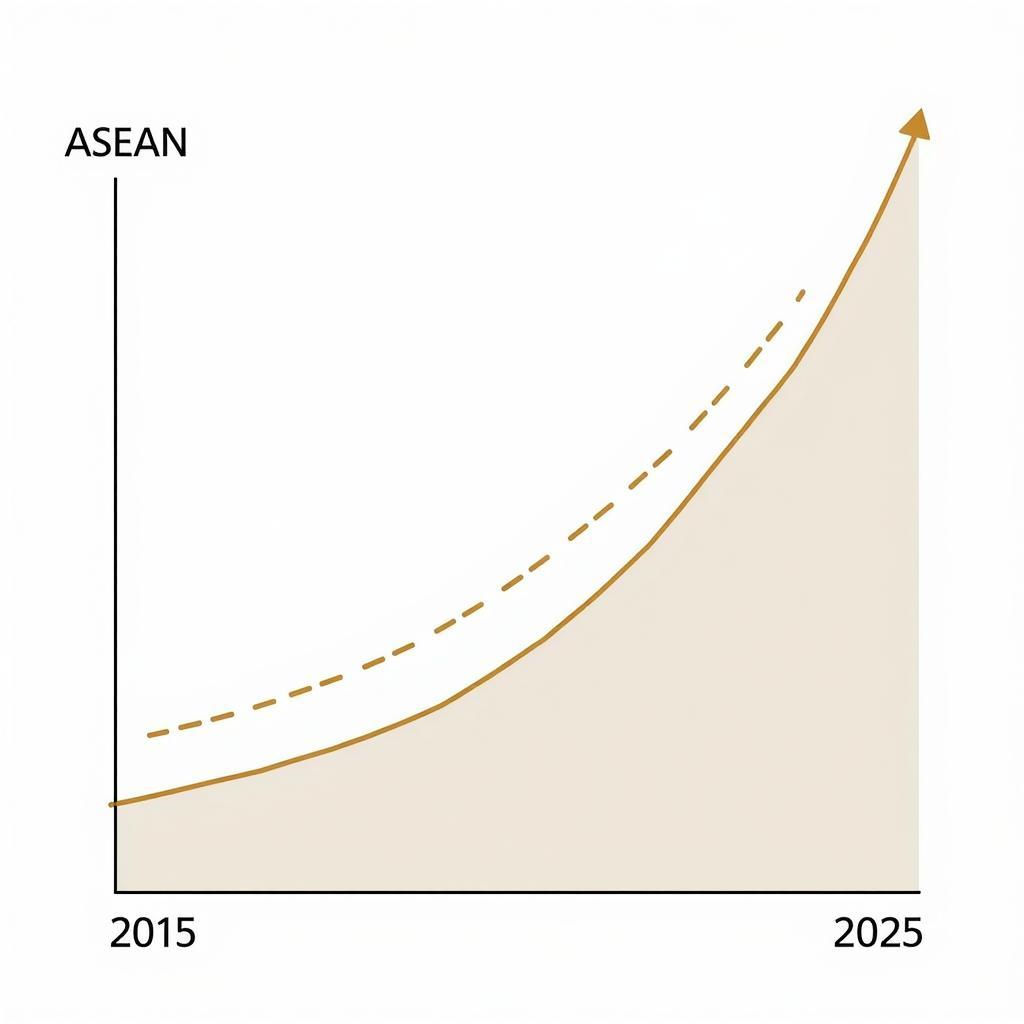ASEAN V2 represents a paradigm shift in Southeast Asia’s regional integration and global standing. But what exactly does this term encompass, and why is it significant for the region and the world? This article delves into the core aspects of ASEAN V2, exploring its implications for economic growth, socio-cultural development, and geopolitical stability.
The Evolution of ASEAN: From V1 to V2
To comprehend ASEAN V2, it’s crucial to understand the evolution of the Association of Southeast Asian Nations (ASEAN). Established in 1967, ASEAN initially focused on fostering political stability and security cooperation amongst its member states. This phase, often referred to as ASEAN V1, witnessed the region emerge from the shadows of colonialism and Cold War tensions.
The subsequent decades marked a transition towards economic cooperation, with the establishment of the ASEAN Free Trade Area (AFTA) and the launch of initiatives like the ASEAN Economic Community (AEC). This phase, often dubbed ASEAN V2, aimed at deepening economic integration, promoting trade liberalization, and enhancing regional competitiveness.
 ASEAN Economic Growth
ASEAN Economic Growth
Defining ASEAN V2: Key Pillars and Objectives
ASEAN V2 signifies a more ambitious and forward-looking vision for the region. While building upon the foundations laid by its predecessor, ASEAN V2 encompasses a broader set of objectives and initiatives, including:
- Enhanced Economic Integration: ASEAN V2 aims to create a single market and production base, characterized by the free flow of goods, services, investments, and skilled labor. This involves streamlining regulations, harmonizing standards, and promoting digital trade.
- Strengthened Connectivity: Improving physical, digital, and people-to-people connectivity is crucial for unlocking ASEAN’s economic potential. This includes investments in infrastructure development, digital transformation, and initiatives fostering cultural exchange and tourism.
- Promoting Innovation and Digital Economy: ASEAN V2 recognizes the transformative power of technology. The region is actively promoting innovation, entrepreneurship, and the growth of the digital economy to enhance competitiveness in the global market.
- Sustainable Development and Inclusiveness: ASEAN V2 emphasizes the importance of inclusive and sustainable development. This includes addressing issues like climate change, environmental degradation, poverty reduction, and social inequality.
- Enhanced Global Role and Influence: ASEAN V2 seeks to strengthen the region’s collective voice and influence in global affairs. This involves actively engaging in multilateral forums, promoting dialogue and cooperation on shared challenges, and advocating for ASEAN’s interests on the world stage.
Opportunities and Challenges of ASEAN V2
ASEAN V2 presents a myriad of opportunities for Southeast Asia. The region boasts a young and growing population, abundant natural resources, and a strategic location at the heart of global trade routes. The successful implementation of ASEAN V2 initiatives has the potential to unlock tremendous economic growth, attract foreign investment, and elevate living standards across the region.
However, ASEAN V2 also faces significant challenges. These include persistent development gaps between member states, non-tariff barriers to trade, and the need for enhanced institutional capacity to effectively implement regional agreements.
ASEAN V2 and the World: A Region on the Rise
ASEAN V2 has significant implications for the global landscape. The region’s economic dynamism and growing geopolitical clout make it a key player in international affairs. ASEAN’s commitment to multilateralism, open trade, and rules-based order provides a counterpoint to rising protectionism and unilateralism in other parts of the world.
“The success of ASEAN V2 is not just about Southeast Asia. It’s about shaping a more integrated, prosperous, and peaceful world.” – Dr. Maria Fernandez, leading expert on ASEAN affairs.
FAQs about ASEAN V2
1. What is the main goal of ASEAN V2?
The main goal of ASEAN V2 is to achieve a highly integrated and interconnected Southeast Asian region that is economically dynamic, socially responsible, and politically cohesive.
2. How does ASEAN V2 impact businesses operating in the region?
ASEAN V2 creates a more favorable business environment by reducing trade barriers, harmonizing regulations, and promoting investment opportunities. It also fosters a larger and more integrated market for businesses to tap into.
3. What is the role of technology in ASEAN V2?
Technology plays a crucial role in driving innovation, enhancing connectivity, and promoting digital trade within ASEAN. The region is actively embracing digital transformation to enhance competitiveness and improve the lives of its citizens.
Exploring Further: Delving Deeper into ASEAN V2
For a more comprehensive understanding of specific aspects of ASEAN V2, explore these related articles:
Connecting with ASEAN Media: Your Gateway to Southeast Asia
Need assistance navigating the complexities of ASEAN V2 or seeking insights into Southeast Asia’s dynamic landscape? Contact ASEAN Media at 0369020373 or aseanmediadirectory@gmail.com. Our team of experts is available 24/7 to provide you with the information and support you need. You can also visit us at our office located at Thôn Ngọc Liễn, Hiệp Hòa, Bắc Giang, Việt Nam.
Asean Media – Your trusted source for all things ASEAN.
